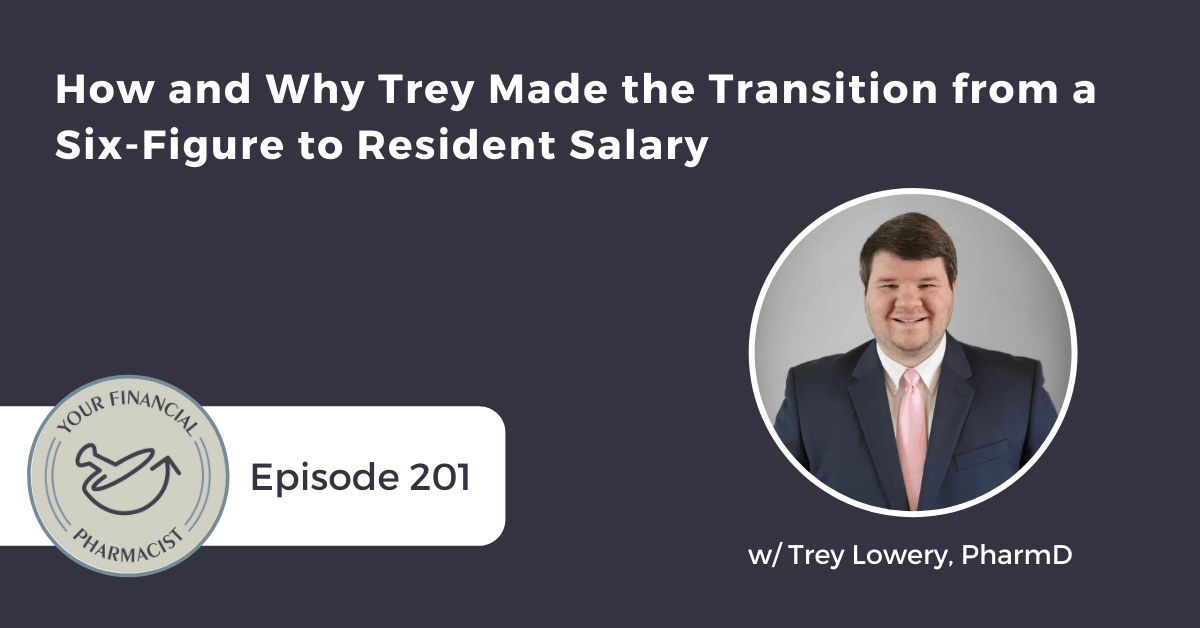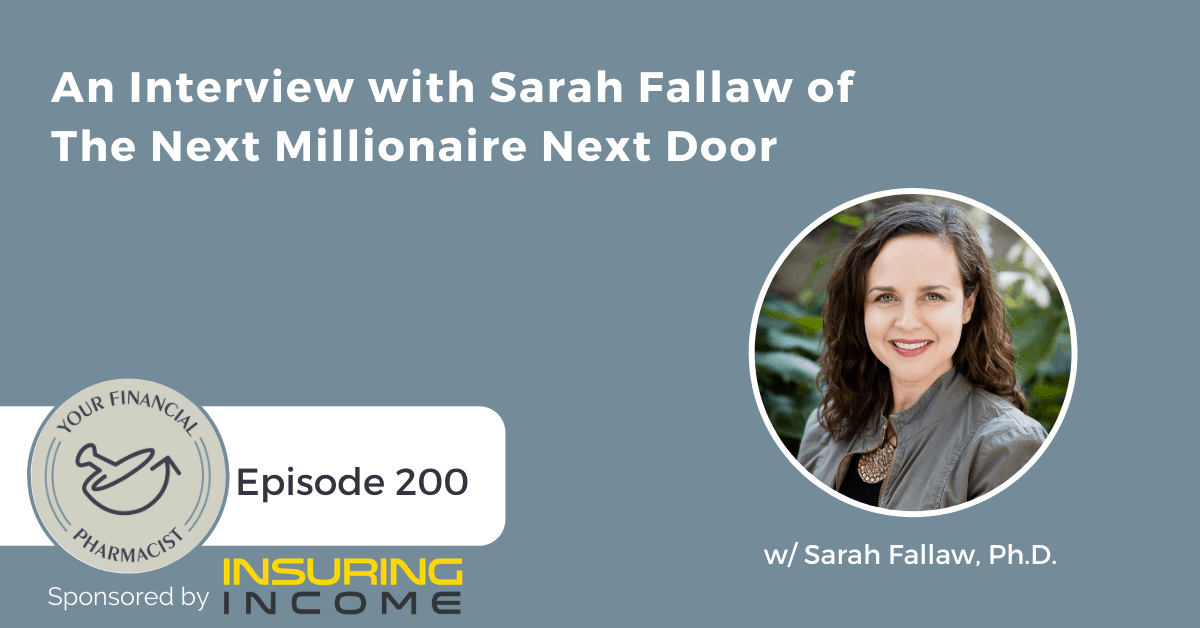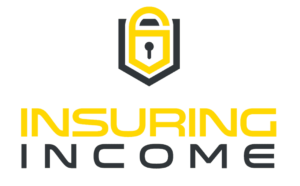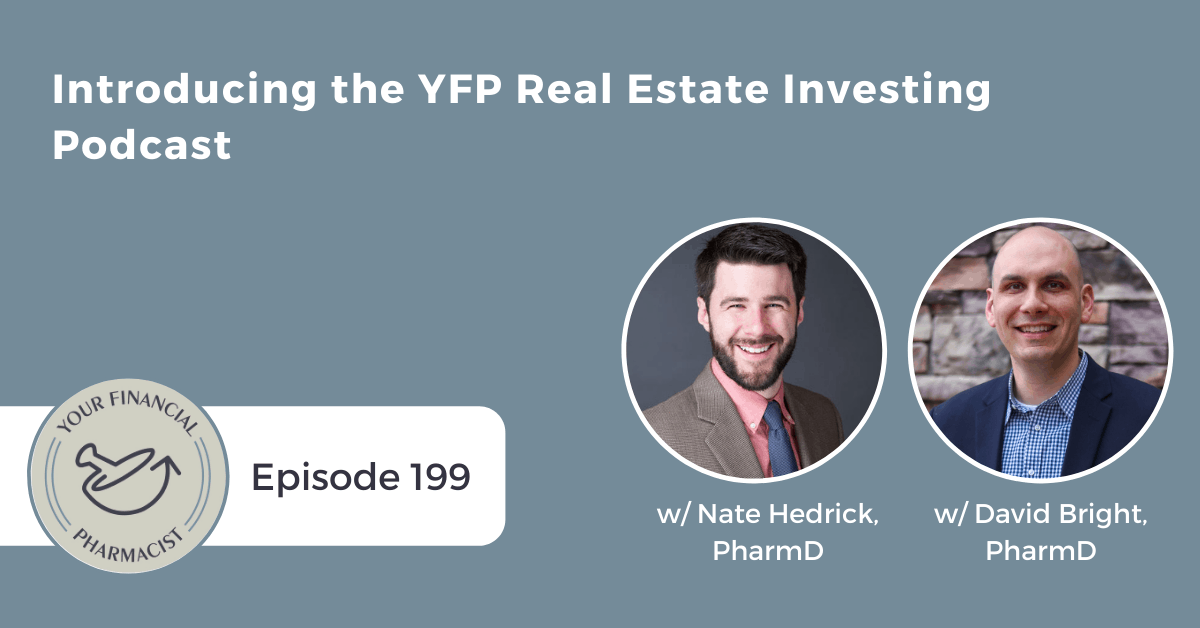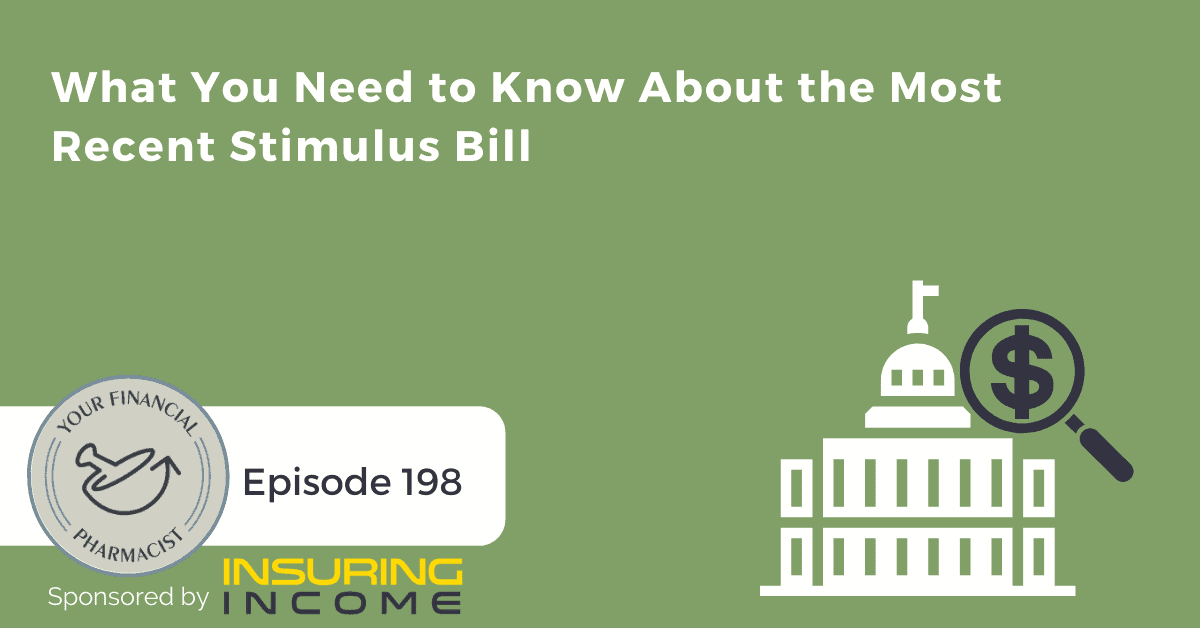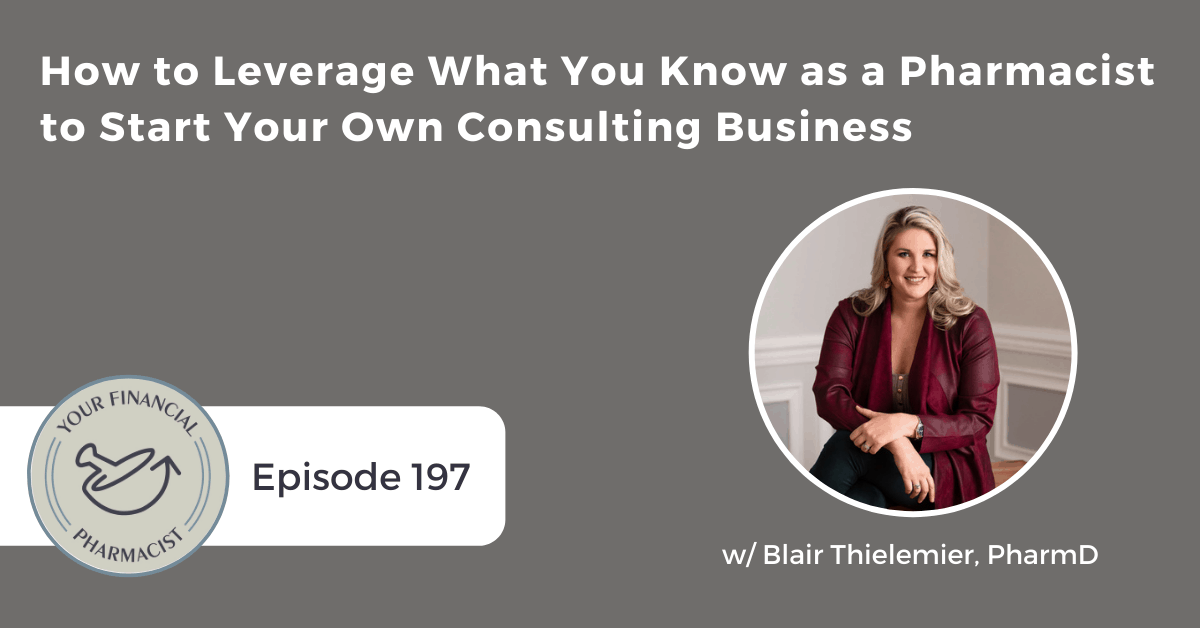How and Why Trey Made the Transition from a Six-Figure to Resident Salary
On this episode, Tim Ulbrich talks with Trey Lowery about his experiences taking a non-traditional path towards residency training. They discuss why Trey decided to go back to complete residency training, how he and his wife were able to make the transition from a six-figure to a resident salary, and financial tips for those going back to do residency or making a job transition.
About Today’s Guest
Trey Lowery is a clinical outpatient pharmacist at the Iowa City VA Health Care System. He attended pharmacy school at Mercer University College of Pharmacy in Atlanta, Georgia and moved to Iowa City, Iowa with his wife, who attends graduate school at the University of Iowa. He began his pharmacy career as a staff pharmacist for Hy-Vee Pharmacy following graduation in 2018. He then matched to the Iowa City VA’s PGY1 pharmacy residency program in 2019 and continued there in his current position upon completion. In the few years following pharmacy school graduation, Trey experienced the transition from student to the seemingly never-ending job search, to full-time salaried pharmacist, to resident, and back to pharmacist salary again. He is excited to share his experiences with other pharmacists in hopes it will encourage them to not allow potential decreases in pay to prevent them from pursuing their dream job as a pharmacist.
how to Summary
On this episode, Tim Ulbrich welcomes Trey Lowery to the show to discuss his experiences with his non-traditional plan towards residency and the many adjustments that came along with it. Trey shares some of the challenges he and his wife worked through along his journey to residency and how both compromise and financial savvy helped them through the transition.
Some of the best tips and advice that Trey shares in this episode include making sure that you have a solid budget and financial plan ahead of time. Trey shares his long history with budgeting and how he views it as a tool for success rather than something limiting. Tim and Trey go over Trey’s very practical advice on budgeting during residency, including a formula for building your residency budget even when you are not sure of your salary and specifics.
Additional advice includes building your emergency fund up to be able to fund at least 3-6 months of expenses. The reasoning for this is simple, with a 6-figure salary, unexpected expenses and events are much easier to manage, but with a resident salary, those same unexpected expenses and events can be a bigger problem.
Trey closes with a little motivational push and encourages anyone who is looking to take a non-traditional path to residency to do so.
Mentioned on the Show
- Take the Financial Fitness Test
- Mint
- YFP Budget Template
- YNAB
- Pharmacists: Occupational Outlook Handbook
- YFP Planning: Financial Planning for Pharmacists
- Dave Ramsey
- The Pharmacist’s Guide to Conquering Student Loans by Tim Church, PharmD
- Join the Your Financial Pharmacist Facebook Group
Episode Transcript
Tim Ulbrich: Trey, welcome to the show.
Trey Lowery: Thanks, Tim. Appreciate you having me.
Tim Ulbrich: Appreciate you taking time to come onto the podcast and really share your story and pearls of wisdom for transitioning from a student pharmacist to a pharmacist with a six-figure income to a resident salary and what that meant for you, for your personal situation, and how you were able to financially plan for that transition. And so let’s start with your pharmacy background and give our listeners a little bit more of a picture of where you went to pharmacy school, when did you graduate, and then the route that you took through residency to your current role.
Trey Lowery: Sure thing. So I grew up in the state of Georgia and then went to pharmacy school at Mercer University College of Pharmacy, which is in Atlanta. I then got married after school and my wife decided she wanted to pursue a PhD program. And she chose to do so at the University of Iowa, so then we made the transition and moved from Georgia halfway across the country to the great state of Iowa. And when I got here, I didn’t really have many connections, I wasn’t licensed yet, so I had to figure out how to transition into passing all the different licensing exams and attempting to find a job without a license and without any knowledge of anyone in the area. So thankfully, I was able to do so after a couple of months. And I ended up working at Hyvee pharmacy. It was about an hour away from where I lived, so the job search was certainly expanded. And then after about 9-10 months of working at Hyvee, I applied to the several different residency programs and ended up matching at the Iowa City VA, where I completed my PGY1 and then after finishing it, I was happy to continue on in my current position as a clinical outpatient pharmacist there at the Iowa City VA as well.
Tim Ulbrich: And I’m excited to share your story with others as I suspect there may be many pharmacists out there listening that for whatever reason, you know, didn’t complete residency training right out of school, which may have been Plan A for them in their mind or perhaps they discovered later on that they wanted to do residency training. And that could either be a financial decision, that could be a family situation, a move that’s going on, it could be a match situation, lots of reasons why folks may not necessarily complete residency right out of school. But there may be an interest to go back and complete a later program at a later time. And I think one of the common barriers is wow, this is a big financial change to be considering, right? Going from student income to finally you’ve got that pharmacist six-figure income and then taking a step back at least financially in terms of that resident income. And so we’re going to dig into that in more detail here in a little bit, but I want to give our listeners more perspective on your Plan A and then obviously your work that you ended up doing at Hyvee. But my understanding is your goal was if possible to do residency right after your P4 year and because of the timing, because of the move, you weren’t able to enter Phase 1 of the match, didn’t yet know where you were going to be because of location with your wife’s PhD programs and the options and then at that point were able to move into Phase 2 — for all that have been through this process know how difficult Phase 2 of the match can be in terms of the number of applicants that are out there relative to the position. So talk to us through about that experience. How challenging was that in terms of that being up in the air, unknown, as well as having to make that decision that this is Plan A but I’m going to put that on the back burner because of this move. And if it works out in Phase 2, great. If not, then you’ll pursue something else.
Trey Lowery: Sure, I think that’s one of the interesting parts of my story is that I went into pharmacy school thinking I didn’t want to do a residency because I had worked originally as an intern and as a technician for a company called Kroger, which is very similar to Hyvee, back in Georgia. And I thought that that was the path I wanted to do. I was thinking retail pharmacy, maybe some type of independent or ownership later on. But it wasn’t really until my fourth year rotations when I actually got experience in the clinical and hospital side of pharmacy that I really decided, you know what? I actually really like the idea of the work that I’m doing here, so much so that it was basically around September when I decided OK, I definitely want to pursue a residency. But then the applications were due in December. So that was also part of the speeding up process that I had at the time. So I did what I could in those couple of months, tried to get some research experience, doing some more experience in the clinical areas and bolster my CV as much as I could. But yeah, the unknown of having to wait for Phase 2 was certainly challenging I suppose would be the word. I mean, we didn’t know where we were going to move, we didn’t know how we were going to financially survive after the move because if I didn’t match, then I wouldn’t have a job already lined up in the area. So it was certainly a challenging time. And it was one of those things to where we basically had to decide which of our careers would help the other one, sort of. So my wife was willing to take a year off if that meant that I could pursue a PGY1 anywhere in the country. But ultimately, we decided to go with — stick with the plan of her going ahead and going into school because it was going to take significantly longer and then my ability as a pharmacist to find a job would likely be a little bit easier than hers just coming out of undergrad.
Tim Ulbrich: Yeah, and I’m glad, Trey, that you guys were able to work through that and come to that decision as a family because obviously now you guys are in a great position at the Iowa City VA, your wife’s continuing on in her PhD degree, so it all worked out, but I’m sure that was incredibly stressful in the moment as you guys were evaluating the options that were in front of you. And so you make this move, you obviously get into Phase 2, limited options, lots of applicants, and ultimately weren’t able to land a position in Phase 2. So now you’re at the point of getting a job, right? So you land a position with Hyvee pharmacy, and my question here is once you were in that role, obviously I’m sure in the back of your mind you’re still thinking about residency as a path that you may be interested in, some of your career goals that you identified here in the fourth year that were of interest to you, but you’re making a good income. And I think this can be a hard thing to really objectively say, “I want to go back and pursue this training pathway,” knowing that it’s going to reduce my income by a half, certainly probably even more than that for some positions. And so talk to us about that decision-making process, you know, how you were able to really objectively evaluate, you know what, this path of residency is best for me, even if it means taking a pay cut to go back and do that.
Trey Lowery: Well, for me, Tim, it really stemmed from thinking about what my long-term career goals were as well as my wife’s — you know, obviously that was certainly a sacrifice for both of us in doing that. So when I got to thinking about what I wanted to do over the course of my career for the next 40+ years, I really just didn’t think that my current position was something that I was comfortable with thinking about in the long term. I really thought that I wanted to get more involved in the actual act of patient care, being able to handle some of the decisions instead of being more reactive by when they just come to the pharmacy and drop off prescriptions, it’s hard to really make a lot of interventions in that setting. And depending on when my wife finishes her PhD, we don’t exactly know what’s going to happen there. So it may involve another move, it probably — it will likely involve another job search. And I figured that if I could do anything to bolster my ability to be more marketable in that area by having residency training, then I’d also improve my chances of finding a job in the future and then hopefully being able to land something that I really enjoy like I have right now.
Tim Ulbrich: Well, and good call on the VA. You know, obviously we have many, many VA pharmacists that listen to this show that we work with as clients. And we know how much they enjoy the VA from a scope of practice, from obviously the quality of employment, the benefits, but also from the ability to transition. You know, one of the benefits of the VAs, if you guys have to pick up and move across the country, if you’re able to locate with another VA, you know, that minimizes a lot of the licensure concerns and other things of transferring your practice. So what a great opportunity that you have there. What about the experiences at Hyvee? You know, one of the things I’ve noticed as a residency program director and previous experiences is I have found that those that have some work experience, so graduate from pharmacy school, go out and work for a year or two years, however long that be, and then come back and do residency, seem to be a little bit better prepared to take on the demands, the challenges, the rigor of residency. Are there specific experiences that you had at Hyvee or skills that you obtained through that year that you felt like really benefited you during the residency year?
Trey Lowery: Yeah, and I think that’s an important point for those seeking to go back to do residency is using that to your advantage rather than saying, you know, I’m actually multiple years out of school, I’m well into one specific area, how can I go into a residency program that’s going to require well-rounded, maybe things that I haven’t done before? But I think like you mentioned that that is actually something to use to your advantage because one thing you’ll have over the other candidates that are applying that are still in school is that you’ve actually made that transition into I am an independent practitioner, I have ownership over my practice, when I scan the barcode to verify my prescription, that’s the last check. It’s completely up to my abilities as to whether or not the patient is getting the right thing, and I’m now the one responsible. So I think between that, you also gain some supervisory experience because you’ll actually have technicians that it will be just you in the pharmacy, you have to do a little bit of kind of management of time and management of people in that area. And then for me, it was just kind of the relationships that I really was able to develop with my patients. You know, actually seeing that your work is having an impact on them really makes you want to take more ownership of that. And so then going back into residency, I’d already seen the effects that I could have as a pharmacist on my patients. And so I think that made me care about it a little bit more knowing the sacrifices that I was making to be there.
Tim Ulbrich: Trey, one of the things I think about besides the financial transition, which we’ll get to in more detail here in a few moments, you know, just having a year I guess off — not necessarily off, you obviously were practicing, using skills, but you know, it’s a different pace from happy clinical rotations where you’re being evaluated and you’re expected to do so many interventions and have a certain autonomy of practice. So being, having that transitionary year and even just schedule differences, you know, I think about the pace typically of a residency probably were in more of a normal, not going to say not stressful, but normal schedule, so you finally graduate from school, you get to somewhat of a normal scheduled routine, and then you say, “You know what, I’m going to raise my hand to make a lot less money, to work a lot more, to be able to develop these skills further.” So money aside, just talk to us about the transition of a year off, not using some of those skills perhaps that you obtained in your final year of school or throughout your PharmD as well as just the schedule differences and how you were able to get back into the flow and the rhythm when you started residency.
Trey Lowery: It was definitely a transition, to say the least. For the first couple of months when you’re getting licensed and studying for your board exams, it still feels a little bit like school because I was taking most days of the week to study for that and for job searching purposes and that kind of thing. So for the first couple of months, I didn’t feel like I could just completely relax and not have to worry about the scheduling part. But you’re right, once I got into the position I was in, it was very much I go to work and then I come home and then I don’t necessarily have a bunch of projects or schoolwork or studying to do. And it is definitely easy to get caught up in that position. So when making the transition back, I’ll be completely honest, it was difficult the first couple months. I really felt like I had to do some extra reviewing so that I knew the topics I really hadn’t used in a year or plus, since my rotations when I’m actually going through my rotations in residency. And the scheduling, it was very much a team aspect in our household. My wife definitely helped so much with figuring out ways that we could be able to make sure that we spent time together, that we were — that I had time to focus on my residency projects and had ample time to be at work when I needed to. And it was certainly not easy. But after the first couple of months of residency, I suppose you kind of get used to it. You know what you have to do at that point, but yeah. Certainly a big difference from how it was before then.
Tim Ulbrich: Yeah. So let’s transition to talk about some of the financial tips that you shared with us prior to the interview that I think would be really helpful for folks that are considering a similar pathway, you know, student, practicing pharmacist going back to residency or folks that may be transitioning jobs or careers. I can think of situations where someone’s salary might be reduced or they’re looking to go part-time or they’re making a transition to another position that doesn’t have the same salary and just general financial principles that I think are helpful for individuals that find themselves in a similar situation. And the first one that you mentioned, Trey, is to make sure you have a solid budget and solid habits around budgeting before you get started. So tell me about budgeting, how you and your wife created good budgeting habits and effectively budgeted prior to making this transition back into the residency position. What did this look like?
Trey Lowery: So I am thankful that both of my parents are very financially savvy and both of my wife’s parents are the same. So I actually started my first budget when I got my first job at age 16 because for me, I looked at budgeting not as something that was limiting what I got to spend and where I got to spend the money that I was earning, but I felt very relieved in that I could actually allocate where certain parts of my income was going and then it was OK for it to go to those areas. So when I — when we got married, that was very important to me. I had listened to plenty of examples from different financial advisors throughout the country and from YFP as well to where I knew that money can certainly become an issue in marriage. And so we really wanted to focus on that at the beginning to make sure we were on the same page and go ahead and knock that out. So I use primarily Mint.com and then a couple of other different spreadsheets to track the budgets that we make. And it certainly took a couple of months for that to really become an effective tool. It took some balancing in certain areas and making sure that we were on the same page of all the different categories and that kind of thing. But the reason I say that that’s such an important aspect is because if you don’t have that going into residency, you’re not going to be able to create it while you’re there. You’re not going to have enough time, probably not enough energy, and then if you do have a family, it’s going to be very difficult to get everyone on the same page in the chaos that is residency. So that’s why I recommend if you can, go ahead and — I mean, useful budgeting, good budgeting habits are beneficial for anyone at any time I believe. But if you can make sure that you have those working effectively beforehand, it will only benefit you once you actually enter the reduced salary stage.
Tim Ulbrich: That’s great advice, Trey. And I think sometimes it’s easy, you know, P4s that are listening that are going to be starting a residency, starting a job, folks that are in a position such as yours that might be making a transition where there’s a salary change, sometimes it’s easy to say, “I’m just going to wait until I see what that actual pay stub and take-home pay is,” but I think you can get close enough, right? You can estimate close enough, work through the budget. It won’t be perfect, but the point is you’re being intentional, you’re being prepared with the transition, and then you can fine tune and refine it once you actually get that first pay stub and begin to move forward there knowing that you’ve been intentional and been prepared. Yeah, we have a budget template for folks that are looking to get started with a budget. If you go to YourFinancialPharmacist.com/budget, we have an Excel template that you can download, work through that. We use a zero-based budgeting method and system, and then you can take that information and plug it into a tool like Mint.com, like YNAB, or any other budgeting tool or software or good ol’ pen and paper or Excel if that works best for you as well. So that’s No. 1 around budgeting. No. 2 here is increase your emergency fund if you don’t already have 3-6 months of expenses saved. So why, Trey, did you decide to focus on building emergency fund prior to residency? How did you guys practically do this? And did you end up having to use that fund at all during residency?
Trey Lowery: So this is something that we did initially upon finishing school. That was kind of our first major goal. And it was fun because it gave us something to work towards together that wasn’t high-risk, high-reward, that kind of thing. It was something that we knew that once we got there that would just be a nice cushion for us to have going forward. So the reason that I would recommend increasing your emergency fund or at least having the usual is kind of 3-6 months’ expenses is the recommended is because obviously if you’re decreasing your salary that much, a $1,000 home repair or a car expense or some kind of unexpected family emergency happens, when you’re on a six-figure salary, that isn’t that big of a deal. You just say, “OK, I’ll just move around this part of the budget, and we’ll cover it.” But when you’re in a residency salary, you know, let’s say you bought a house, you have a family, it’s going to be very difficult to make that unexpected expense be able to be covered. And then that could lead to things like putting it on a credit card and then that will only amplify and amplify as things continue to happen. So when you’re in residency, the last thing you want to be concerned I think is some kind of unexpected financial emergency. You’ve got plenty enough on your mind already. So if you can already have a good-sized emergency fund going into it, I think that will just help everything going forward.
Tim Ulbrich: That’s great stuff. And this third one, you know, really caught me off guard the first time I read it. I had to reread it, and then I got to what you were saying exactly. And it’s really a great, great piece of advice. And that is look for salaries at prospective residency options, pick the lowest salary option — say what? — pick the lowest salary option, create a new budget using that salary. Depending on the results of your new budget, you may need to make adjustments. I think this tip is bold. Trey, tell us about what you mean by this, why you took this approach, and why this can be so valuable.
Trey Lowery: Like you mentioned, you may not exactly know the dollar amount that you’re going to have in your paycheck in order to create a full budget around. So for us, because we knew we were going to be located in the Iowa City area, I knew I was going to be applying for residencies within, you know, a 30-minute, hour range and not too much further. So I went on the forecast website and they have actually all the information regarding the salaries and some of the benefits of each of the programs that you’re applying for. And so when you match, you’re very much committed to that program that you match with. So if you have a bunch of different salary options, if you’re looking all over the U.S., it certainly I’m sure varies. If you can create your budget around the lowest one such that if you happen to match to the lowest salary option, which I actually did, so it ended up working out well. I didn’t have to change any of my budgeting once I actually started residency from that perspective. But if you can pick the lowest one, that will be your most strict option for your budget. And if you end up matching with a program that’s anything above that, then at that point, you’ll have extra to put towards other goals or other discretionary expenses, that kind of thing when you’re going into residency. But for me, it was just a way of not getting caught off guard when you had such a massive decrease in income all at once.
Tim Ulbrich: That’s great advice, especially considering the separation you can see of resident salaries, depending on where they’re located, types of roles and things like that. So that can be a big difference if you’re looking at, I don’t know, $48,000 versus $40,000 for example. That can be a significant impact on that year and during that year as well. No. 4 is have a plan for your student loans during residency. What would it be in terms of a YFP podcast if we didn’t mention or talk about student loans? So let’s go there for a minute. How did you decide to handle your student loans during your first year working and then also in residency? Talk to us about the plan, the approach, the strategy you’ve taken, and how you ultimately have gotten to that decision that that is the best repayment plan and option for you.
Trey Lowery: So when I first figured out that I was going to be using student loans to get through graduate school, I had to figure out basically what was going to be my approach to either whether I’m going to pay them off or attempt to go for forgiveness, that kind of thing. When I first started pharmacy school, I really didn’t know that there was such a thing as forgiveness. And my dad always told me, “You know what, you’ll make enough, you’ll be able to pay it off. It’ll be good in the long run. Just go ahead and take them out. You’re going to need to because we couldn’t afford to send you all the way through graduate school.” So I went through pretty much all the way through school thinking that that was going to be my plan, that I was going to pay them off. And then in my fourth year of school, I actually went to a financial advisory meeting led by one Tim Ulbrich from Your Financial Pharmacist. And that is where I discovered that there actually were forgiveness options available, which I had not realized at the time. I feel like I might have already been somewhat committed because the financial gurus that I followed were like Dave Ramsey and some others, which are very much you took out the debt, you need to attack the debt and tackle it in order to make your own financial goals become a thing. But like I said, I hadn’t considered that there were actually other options. So ultimately after looking at the numbers and weighing how we felt about our debt, I did decide to go for the pay-it-off method, which I’m currently doing now, although granted the 0% interest and no payments are certainly a benefit in that.
Tim Ulbrich: Right.
Trey Lowery: With them being federal. But that was what we ultimately decided, and additionally, because I was at first at Hyvee and I wasn’t at one of the accredited organizations that would qualify for PSLF, I really didn’t know if I was ever even going to be in a position to do that.
Tim Ulbrich: Right.
Trey Lowery: So I did use my first year to do some paying off of the debt then as well.
Tim Ulbrich: Yeah, I think that’s great, Trey. And you know, as I shared with you before we hit record, as I’ve said many times on this podcast before, this really is an individual situation. And you know, I think at the end of the day, it’s about having a plan, that you understand the options that are out there, and you feel confident in evaluating those options and knowing that when you apply those options on top of your personal situation that you’ve gotten down the path of the best repayment option or strategy for you personally as an individual. And I think for folks that are listening, you know, this can be a topic that obviously can be overwhelming, there’s lots of options, there’s forgiveness, there’s nonforgiveness, there’s federal, there’s private, the list goes on and on, and it can feel overwhelming. It can become paralyzing. And I think really digging in to understand the options is important and a great piece of advice here for those that are — really for anyone with student loans, but especially for those that are going back into a residency position or going through residency training to make sure that you’re using this time to evaluate those options. So I would recommend to our listeners, Tim Church wrote an awesome book on student loans for us, “The Pharmacist’s Guide to Conquering Student Loans,” really an A-Z guide of all things student loans, customized to the pharmacy professional, really meant to go through all of those options and help you apply that to your personal situation. You can learn more about that at PharmDLoans.com. Trey, this has been outstanding. I think for those that are currently in training, going to pursue training, whether it’s right from pharmacy school, going back, I think they’re going to find a lot of value in your advice and there’s a lot of wisdom here. Any other advice that you have, financial tips, wisdom to share with those that are listening that are going back into a residency position or going right into a residency position, making this transition? Any tips or advice that you would have for them as they go through that transition?
Trey Lowery: Well just like with finances, I think this is really a personal decision, and it depends on what your career goals are. Personally, I feel that if you are someone that is committed to pursuing your residency and you know that that’s the path that you want to take, you’re going to be able to figure out the finance part and make it work if you’re committed enough to following that path. So I think just taking some time to figure out what your career goals are and what steps you’re going to need to take to get there are probably the most important. And when I look back on my time during residency, obviously I’m not 40 years down the road at the moment, but I can say even nine months out that I really, really absolutely feel that it was worth it. And I think that in the long term, having a position that I really enjoy, that I feel like I gain a lot out of and I’m really able to make an impact on my patients’ lives the way that I think I would like to, no matter what, that’s going to be worth the $60,000, $80,000, however much you’re giving up for just one year. And if you were to develop good budgeting habits before that time ever comes, then that actually may end up benefiting you financially even more in the long run than not doing a residency in the first place. So I think there may be multiple benefits to pursuing that. But like I said, for me it’s really just depending on the individual.
Tim Ulbrich: You beat me to it, Trey. One of the things I believe — I have no evidence to support this, you know — but one of the things I believe is that a benefit of that year, if you take full advantage, or two years perhaps, is that it really does force you on some level to build some of the behaviors that can have a very long-term benefit throughout your career. So I think one way of looking it at is ‘Oh man, I’m not going to make much money at all.’ Another way of looking at it is, ‘Hey, maybe there’s an opportunity to learn some things throughout this year, whether it’s goal-setting, budgeting, being intentional in other parts of the financial plan, that can have a benefit well beyond those training years.’ So Trey, again, thank you for your time. And appreciate you and your willingness to come on the show to share your story.
Trey Lowery: Thank you so much, Tim. I’d like to say if anybody is in the YFP community on Facebook, feel free to reach out. I’d be happy to continue to share any other points that I might have. If this is something that you’re pursuing, definitely consider it because you definitely can do it. Thank you, Tim.
Tim Ulbrich: Thank you, Trey.
Current Student Loan Refinance Offers
[wptb id="15454" not found ]Recent Posts
[pt_view id=”f651872qnv”]

